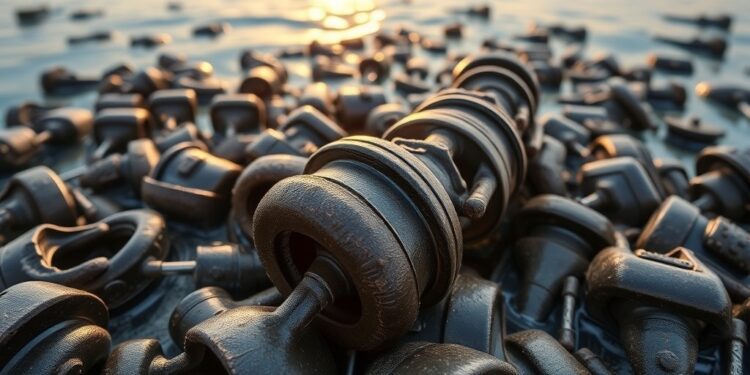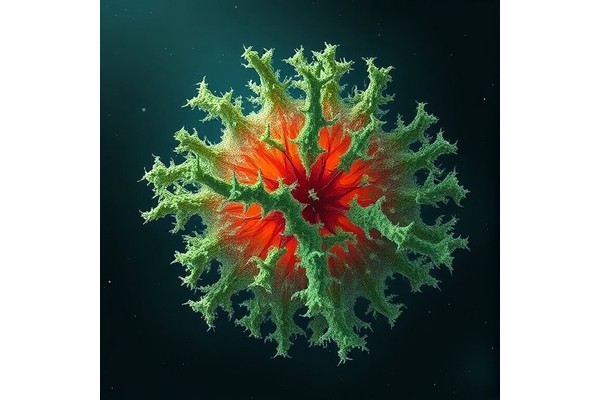Assessing the Ecological Consequences of Unexploded Ordnance in the Baltic Sea
Assessing the Ecological Consequences of Unexploded Ordnance in the Baltic Sea

It is estimated that around 300,000 tonnes of unexploded ordnance (UXO) remain in the German Baltic Sea. Most of this originates from deliberate dumping after the end of the Second World War. These dumping sites are well documented, with much of the ordnance lying visibly on the seabed, allowing it to be mapped and documented using underwater robots. However, explosive compounds are spreading beyond these dumping sites. As corrosion progresses, contamination is expected to increase, heightening risks if these legacy munitions are not removed. Rising temperatures and increased storm activity due to climate change further accelerate the release of these explosive chemicals.
Toxins Found in Almost Every Sample
A new study from the GEOMAR Helmholtz Centre for Ocean Research Kiel highlights the long-term environmental contamination caused by unexploded ordnance in the south-western Baltic Sea. Water samples were taken from the region in 2017 and 2018, including from the Bay of Kiel and the Bay of Lübeck. Ammunition-related chemicals were detected in almost every water sample. The concentrations detected were generally well below drinking water limits or toxicological thresholds for marine organisms. In some cases, however, concentrations approached critical levels.
“Unexploded ordnance contains toxic substances such as TNT (2,4,6-trinitrotoluene), RDX (1,3,5-trinitro-1,3,5-triazine), and DNB (1,3-dinitrobenzene), which are released into the seawater when the metal casings corrode,” explains lead author Dr Aaron Beck, a geochemist at GEOMAR. “These compounds pose a threat to the marine environment and living organisms as they are toxic and carcinogenic.”
Regional Differences in Contamination
Due to variations in the types of munitions dumped, regional differences in contamination levels were observed: particularly high concentrations of TNT were measured in the Bay of Kiel, while RDX and DNB were more prevalent in the Bay of Lübeck. Most munitions-related chemicals were found in dissolved form rather than bound to suspended particles or sediments.
The researchers estimated that the current amount of dissolved munitions chemicals in the region is around 3,000 kilograms. Without removal action, the contamination is expected to increase as metal casings continue to corrode, releasing more and more toxic compounds. This process is projected to continue for at least 800 years.
A Global Environmental Issue
The study emphasises that chemical contamination from legacy munitions is an international problem. The researchers recommend that dumped ordnance be classified as “historical contaminants of emerging concern” and addressing them through targeted remediation efforts.
Aaron Beck states: “Unlike diffuse pollution sources, UXO exists in a concentrated, already packaged form. This means it can be physically removed from the environment.” Germany’s munitions clearance operations could serve as a model for the removal of such hazardous waste around the world. “With war relics, at least one environmental stressor can be permanently eliminated from the marine ecosystem.”
About: Munitions Clearance Pilot Project
The German government launched a pilot programme for the recovery and environmentally sound disposal of legacy munitions. With a budget of 100 million euros, this was the first targeted effort worldwide to remove munitions remnants from the Sea. The pilot clearance operation began in autumn 2024 in the Bay of Lübeck. The next step is to use the data collected to develop an autonomous clearance platform that will treat and incinerate the ordnance at sea.
Journal
Chemosphere
DOI
10.1016/j.chemosphere.2025.144115
Method of Research
Observational study
Article Title
Widespread environmental contamination from relic munitions in the southwestern Baltic Sea
Article Publication Date
21-Jan-2025
Media Contact
Anna Niewerth
Helmholtz Centre for Ocean Research Kiel (GEOMAR)
presse@geomar.de
Office: 431-600-2812
Journal
Chemosphere
DOI
10.1016/j.chemosphere.2025.144115
Method of Research
Observational study
Article Title
Widespread environmental contamination from relic munitions in the southwestern Baltic Sea
Article Publication Date
21-Jan-2025
Keywords
bu içeriği en az 2000 kelime olacak şekilde ve alt başlıklar ve madde içermiyecek şekilde ünlü bir science magazine için İngilizce olarak yeniden yaz. Teknik açıklamalar içersin ve viral olacak şekilde İngilizce yaz. Haber dışında başka bir şey içermesin. Haber içerisinde en az 12 paragraf ve her bir paragrafta da en az 50 kelime olsun. Cevapta sadece haber olsun. Ayrıca haberi yazdıktan sonra içerikten yararlanarak aşağıdaki başlıkların bilgisi var ise haberin altında doldur. Eğer yoksa bilgisi ilgili kısmı yazma.:
Subject of Research:
Article Title:
News Publication Date:
Web References:
References:
Image Credits:
Keywords
Expanded Program Enhances Research Opportunities for Students
Next PostExpanded Program Enhances Research Opportunities for Students
Boosting Denitrification and Cutting N2O via Glyoxylate Shunt







